2004 Toyota Tundra Repair, Service & Tires
Get Started
Complete Auto Care for Your 2004 Toyota Tundra
-
TIRES FOR YOUR 2004 Toyota Tundra View Tire Info GET TIRE PRICING
-
REPAIR FOR YOUR 2004 Toyota Tundra View Repair Info SCHEDULE REPAIR
-
MAINTENANCE FOR YOUR 2004 Toyota Tundra View Maintenance Info SCHEDULE MAINTENANCE
-
OFFERS FOR YOUR 2004 Toyota Tundra Limited Time Tire Offers VIEW ALL COUPONS
2004 Toyota Tundra Tires
Recommended Tires | Tire Information
2004 Toyota Tundra Tires Sizes, Speed Ratings, and Inflation
Not sure about your 2004 Toyota Tundra tire size? Use the following chart to find information on tire size, speed rating, and inflation.
| Trim Level | Speed Rating | Inflation in PSI F/R | Tire Size |
|---|---|---|---|
| 2004 Toyota Tundra SR5* | S | 26 PSI/29 PSI | P265/70R16 |
| 2004 Toyota Tundra SR5* | S | 29 PSI/32 PSI | P265/65R17 |
| 2004 Toyota Tundra SR5* | S | 32 PSI/35 PSI | P245/70R16 |
| 2004 Toyota Tundra SR5* | S | 26 PSI/29 PSI | P265/70R16 |
| 2004 Toyota Tundra Base* | S | 26 PSI/29 PSI | P265/70R16 |
| 2004 Toyota Tundra Base* | S | 26 PSI/35 PSI | P245/70R16 |
| 2004 Toyota Tundra Limited* | S | 29 PSI/32 PSI | P265/65R17 |
| 2004 Toyota Tundra Limited* | S | 26 PSI/29 PSI | P265/70R16 |
|
2004 Toyota Tundra SR5* Speed Rating: S Inflation F/R: 26 PSI/29 PSI |
|
2004 Toyota Tundra SR5* Speed Rating: S Inflation F/R: 29 PSI/32 PSI |
|
2004 Toyota Tundra SR5* Speed Rating: S Inflation F/R: 32 PSI/35 PSI |
|
2004 Toyota Tundra SR5* Speed Rating: S Inflation F/R: 26 PSI/29 PSI |
|
2004 Toyota Tundra Base* Speed Rating: S Inflation F/R: 26 PSI/29 PSI |
|
2004 Toyota Tundra Base* Speed Rating: S Inflation F/R: 26 PSI/35 PSI |
|
2004 Toyota Tundra Limited* Speed Rating: S Inflation F/R: 29 PSI/32 PSI |
|
2004 Toyota Tundra Limited* Speed Rating: S Inflation F/R: 26 PSI/29 PSI |
* Note: these models have different tire sizes depending on vehicle options.
Recommended Tires for Your 2004 Toyota Tundra
What tires are best for a 2004 Toyota Tundra? Check out the following tire brands and types.
 Blizzak DM-V2
Blizzak DM-V2
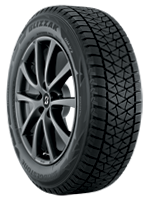
- No warranty
- Winter
- Winter
 ALENZA AS ULTRA
ALENZA AS ULTRA
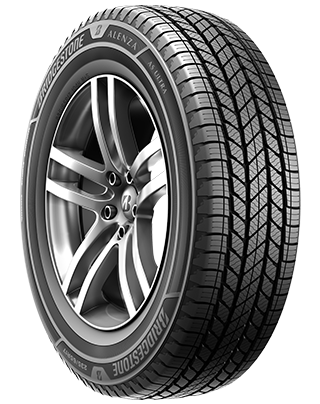
- No warranty
- All-Season
- Light Truck Tires
 Dueler A/T Revo 3
Dueler A/T Revo 3
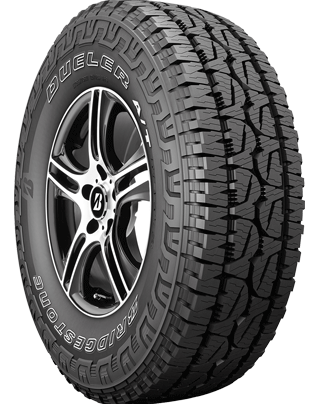
- Platinum Pact Limited Warranty
- All-Season
- Light Truck Tires
 Dueler H/T 684 II
Dueler H/T 684 II
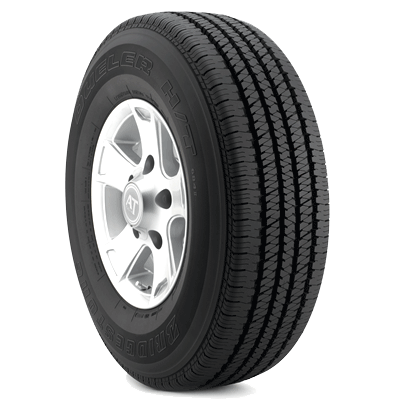
- Platinum Pact Limited Warranty
- All-Season
- Light Truck Tires
 Destination A/T2
Destination A/T2
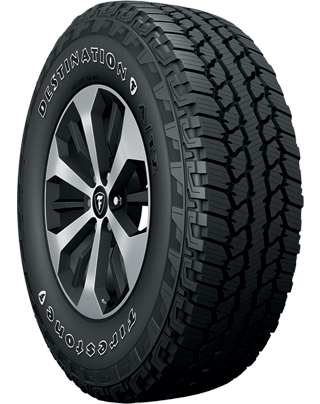
- Gold Pledge Limited Warranty
- All-Season
- Light Truck Tires
 Destination LE3
Destination LE3
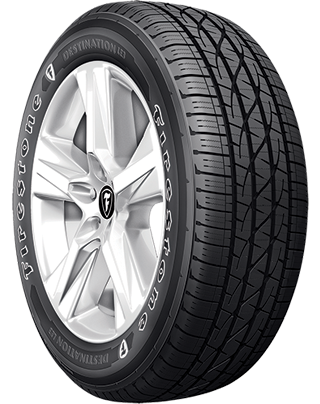
- No warranty
- All-Season
- Light Truck Tires
 Winterforce 2 UV
Winterforce 2 UV
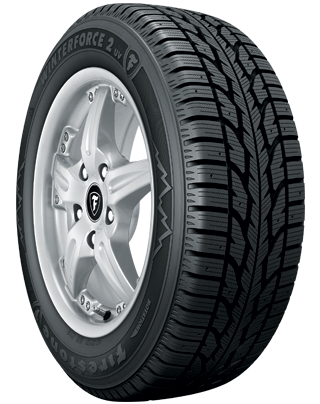
- No warranty
- Winter
- Winter
 Destination X/T
Destination X/T
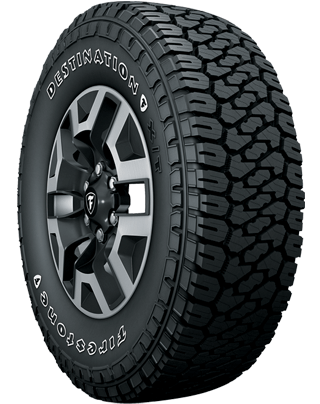
- Gold Pledge Limited Warranty
- All-Season
- Light Truck Tires
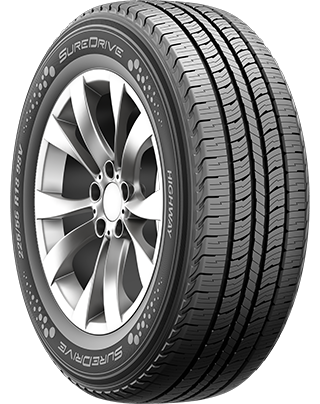
- No warranty
- All-Season
- Light Truck Tires
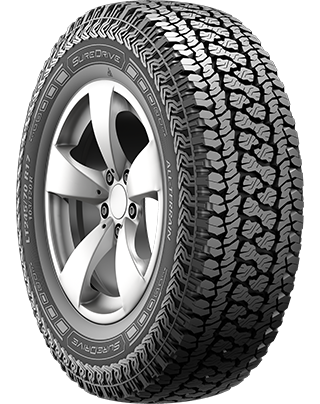
- No warranty
- All-Season
- Light Truck Tires
 OPEN COUNTRY A/T III
OPEN COUNTRY A/T III
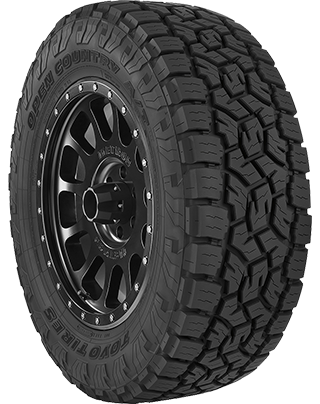
- No warranty
- All-Season
- Light Truck Tires
 OPEN COUNTRY HTII
OPEN COUNTRY HTII
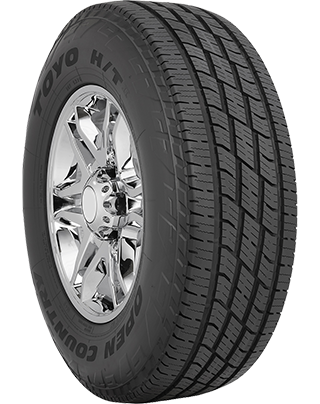
- No warranty
- All-Season
- Light Truck Tires
About 2004 Toyota Tundra Tires
Apart from finding the right tire size, there are a couple of other factors to consider when buying Toyota Tundra tires like where and how you drive, and what tire brand you trust most. When thinking about your driving conditions, consider where you live (mountains vs. city vs. countryside) and the kind of weather can catch you off-guard. (Watch out Tornado Alley!) Many drivers who live in states that experience all four seasons choose to purchase two sets of tires: one for summer and one for winter. Other drivers buy one set of all-season tires instead. That way they don't have to return to the tire shop and their vehicle is always ready for sun, rain, and light snow!
Next, consider your driving style. If you're a diehard off-roader, you have very different tire needs than a highway commuter who doesn't leave the paved path. Visit your local Firestone Complete Auto Care for help selecting the tire that's right for you, or get started by browsing tires that fit your Toyota Tundra.
Installing Toyota Tundra Tires
Firestone Complete Auto Care has been a leading tire provider for more than a century. We're a tire store that also offers professional tire installation, maintenance, and rotation, along with complete auto care. Buy 2004 Toyota Tundra tires online and schedule your installation when it's convenient for you.
2004 Toyota Tundra Tire Questions
-
Is Toyota tire inflation important? The right tire pressure can make all the difference. Proper tire inflation helps increase fuel economy, improve braking time, and boost tire lifespan! Even a small change in tire pressure can impact your driving.
-
Why are there numbers on the side of my Toyota Tundra tires? Your tire sidewall gives you information about load carrying capacity, speed rating, treadwear, traction, and tire size. Talk to one of our tire technicians to learn how to read the numbers on your tire!
-
Can I check the tread depth on my Toyota tires at home? Stay on top of your tire tread depth to help avoid a dangerous drive. You can check tread depth with a penny. Hold the penny so that Abraham Lincoln is facing you, then place your penny into a tread groove upside down. If you can see the top of Abe’s head, your tread is shallow and it might be time for new Toyota Tundra tires. Grab a penny. Hold the so that Abe Lincon's head is facing you and his hair is pointing toward the ground. Then, place the penny into a tread groove. If you can see the top of Abe’s head, your tread is shallow and it might be time for new Toyota Tundra tires.
2004 Toyota Tundra Repair
When to repair, when to replace? Click on a repair below to learn more about Toyota Tundra repairs at Firestone Complete Auto Care.
About 2004 Toyota Tundra Repairs
No driver looks forward to car repairs. But at Firestone Complete Auto Care, we strive to give you the excellent repair experience you deserve. When you come to us for 2004 Toyota Tundra repair services, our technicians will take care of your Tundra like it was their own. Before we begin any repair work, we’ll diagnose any issues and answer your questions about potential repair options. We value your trust, so we recommend only the repairs we think are necessary for your safety on the road.
How Much Does Toyota Tundra Repair Cost?
Several factors can affect the cost to repair your 2004 Toyota Tundra, including which repairs are needed, costs of replacement parts or repair supplies, the amount of labor necessary to get the job done, and your locale. But no matter your location, you may be able to save money with one of our many auto repair coupons or offers.
A few different aspects can influence repair costs for your 2004 Toyota Tundra, like
Questions About 2004 Toyota Tundra Auto Repairs
-
Do I still need scheduled maintenance even when nothing is wrong with my Toyota? The cheapest 2004 Toyota Tundra repair is the one that isn’t necessary in the first place! Staying up-to-date with your car’s scheduled maintenance services is a great way to keep future repair costs low.
-
What does it mean to be 'in tune' with your car? You’re in your car, day in and day out. So, it’s only expected that you know your car better than anyone else! If you notice mysterious smells, strange engine noises, or other out-of-the-ordinary symptoms while driving, trust your instincts and stop into Firestone Complete Auto Care for a Courtesy Check. Catching a potential issue early could help prevent Toyota Tundra repairs.
-
Do I have to get the repairs you recommend for my Toyota? We won’t recommend a service or repair for your 2004 Toyota Tundra unless we think it’s necessary to keep you safe. Want to know more about a specific recommended repair? Ask! We’re here to help.
2004 Toyota Tundra Brake Repair
Your Toyota Tundra may be powered by a strong engine. But if you can't stop it, then it's scrap metal. Don't wait if you're experiencing brake squeaks or a loss of braking power. Safe driving and responsive brakes go hand in hand. Plus, ignoring your brake problems can result in more damage and higher brake repair bills. Get your 2004 Toyota Tundra brakes fixed at Firestone Complete Auto Care. We offer a variety of brake services like brake pad/shoe replacement, rotor/drum resurfacing, brake fluid exchange/bleeding, and brake caliper and wheel cylinder service.
Questions About Your Toyota Tundra Brakes
-
Why does my Tundra shake when I brake? Your Tundra could shake when you brake due to worn brake pads or rotors, warped rotors, loose or worn suspension components, or faulty brake calipers. You can always schedule a free brake inspection at the first sign of strange brake behavior.
-
How often do I need to replace my Tundra brake pads? Brake pads typically last about 30,000 to 40,000 miles. However, driving conditions can affect this range. Sticking to highway driving and braking smoothly can help extend the life of your brake pads, while towing heavy loads or frequently riding your brakes can shorten it.
-
Can brake fluid leak when my Tundra is off? Because your Tundra brake system is a closed hydraulic system, it should not leak brake fluid. However, if components in your brake system have worn out or been damaged, it might cause brake fluid to leak.
2004 Toyota Tundra Drivetrain Repairs
You don't want to go to just anyone for drivetrain repair. Drivetrains for front, rear, and all-wheel-drive and 4WD vehicles are all different. You want to come see the technicians at Firestone Complete Auto Care. We can take care of most 2004 Toyota Tundra drivetrain components Your Tundra might need driveshaft repair if you notice clunks when shifting, vibration as your vehicle accelerates, resistance when turning, or heavy vibrations in your floorboards.
Questions About 2004 Toyota Tundra
-
What are the symptoms of a damaged Toyota drivetrain system? Hear noises toward the back of your Toyota Tundra? See fluid leaking? Having issues turning? These could all be signs of drivetrain damage you don't want to ignore. Take action quickly to catch repairs or replacements before something more severe happens.
-
Why is my Tundra malfunction indicator light (MIL) on? Engine problems, transmission problems, faulty sensors, electrical issues, misfire issues, and connector problems could all cause your Tundra’s malfunction warning light, or better known as the check engine light, to illuminate.
-
How serious is a drivetrain malfunction in my Tundra? Don't ignore a drivetrain malfunction in your Tundra. As soon as you notice a problem, have it checked by a professional mechanic to diagnose the issue and carry out any necessary repairs. Driving with a faulty drivetrain is risky and may further damage your Tundra.
2004 Toyota Tundra Alignment Services
Alignment services involve precise adjustments to your Toyota Tundra’s suspension system, which connects the wheels with the rest of the vehicle. When your car has an alignment service, the individual angles of your tires are adjusted so that they come into contact with the road in just the right way — the way Toyota intended them to. When you bring in your 2004 Toyota Tundra, we’ll perform an alignment check first. After that, we can adjust your wheel alignment angles until they match Toyota’s recommended measurements.
Answers to Toyota Tundra Alignment Questions
-
Are there road conditions that can hurt my Toyota Tundra alignment? When it’s safe to do so, avoid driving over potholes or hitting curbs. These road obstacles can wreak havoc on your wheel alignment, as can wear and tear from rough road conditions.
-
How often should you get a wheel alignment for your Tundra? Typically, your alignment should be checked every 6,000 miles or 6 months, whichever comes first. Double-check your Tundra owner’s manual for Toyota's exact recommended schedule.
-
Does getting new Tundra tires mean you need an alignment? While you don’t necessarily need to get an alignment when putting new tires on your Tundra, it’s still a good idea. Ensuring your wheels are properly aligned can help support optimal handling, tire wear, and fuel efficiency.
Engine Repairs for Your 2004 Toyota Tundra
When your Toyota Tundra engine needs repairs, our expert techs will let you know what needs to be done and why before they get started. We don't start working until we have your approval. If a service can wait, we’ll make sure you know. But if immediate repairs are necessary for your safety, we’ll make sure that's clear, too. We want to provide you with the information you need to make an informed engine repair decision. Turn to Firestone Complete Auto Care for your 2004 Tundra engine repairs and you can drive easy knowing that we use Toyota-approved parts and fluids — timing chain or belt, motor oil seal, sensors, or another part.
Questions About 2004 Toyota Tundra Engines
-
Why does the check engine light come on when I start my Tundra? Generally, your check engine light turning on upon ignition is not a bad thing. It’s just your Tundra firing up its circuits. The light should turn off in a bit, but come see us if it doesn't.
-
Why is my Toyota Tundra making engine noise? Unusual noises can signal a problem with your Toyota Tundra engine. Tapping or knocking could mean you're low on oil. Whistling could mean a belt is misaligned or there's an intake leak. Squealing can indicate a loose fan belt, and grinding might be coming from the brakes, not the engine.
-
What could damage my Toyota Tundra engine? Certain driving habits can damage your engine and should be avoided. These habits include 'running on fumes,' revving the engine while still in Park, or pushing 'the pedal to the metal' before the engine has warmed up. Help sustain your engine’s performance and efficiency by staying miles away from these bad driving practices.
2004 Toyota Tundra Tire Repair
If the road has been rough on your 2004 Toyota Tundra tires, Firestone Complete Auto Care can help. In some cases, a tire doesn’t have to be replaced – it can be plugged and patched with a simple repair. Depending on the damage, though, a repair might not be the right move. Our technicians can determine which option is best for your situation. To start, we’ll consider the location of tire damage, the type of issue, the size and scope of the damage, and the amount of wear on your tires.
If a repair on your 2004 Toyota Tundra tire is feasible and safe, we’ll get to work on the steps to fix it: (1) Separate the tire from the vehicle wheel, (2) fill in the area that’s been punctured to prevent damage from moisture, and (3) secure and seal the inner tire liner to ensure the tire is airtight.
Frequently Asked Toyota Tundra Tire Repair Questions
-
Can I drive my Toyota on a flat tire? Driving on a flat or underinflated tire can put extra stress on your wheels and alignment. While it’s sometimes necessary to drive a short distance on a flat tire to get to a safe place, don’t take any other trips in your Tundra until you can have the flat tire repaired or replaced.
-
Will a temporary sealant fix my Toyota's flat tire? A temporary sealant may be able to help you get to a repair location safely. But temporary or emergency sealants could possibly damage TPMS sensors, and in some cases may even void the warranty on your Bridgestone or Firestone tires. If your tire needs extensive repair, sealant can add time and labor costs to the process.
-
Why do my Tundra tires keep losing air? Your Tundra tires might keep losing air due to a leaking valve stem, puncture or hole in the tire tread or sidewall, or damaged wheel.
2004 Toyota Tundra Maintenance
You want your Toyota Tundra to last as long as possible. If you put in the effort to keep up with proper maintenance, you could hit 200,000 miles (or beyond!) in your Tundra.
Guide to 2004 Toyota Tundra Scheduled Maintenance
There's no need to guess when it's time to get Tundra maintenance, and no need to wait until something goes wrong. It’s as easy as following the recommended maintenance schedule that’s been written specifically for your 2004 Toyota Tundra! Toyota knows your vehicle inside and out (they made it, after all!), so they’ve designed this schedule with your car’s unique needs in mind. Driving conditions, climate variations, and other variables can affect which scheduled maintenance services you’ll need; in most cases, though, recommended maintenance will consist of services like fluid exchanges, filter changes, new brake pads, oil changes, and tire rotations. Staying on track with routine service appointments can help your Tundra perform better, keep you safer on the road, and maybe even save you the headache of dealing with common 2004 Toyota Tundra problems in the future.
Overview of Essential Toyota Tundra Maintenance Needs
Bring your 2004 Toyota Tundra to Firestone Complete Auto Care for factory-recommended maintenance services and an expert technician will begin by performing a Courtesy Check. This Courtesy Check can establish a baseline of what may need to be addressed during your service appointment. Each Courtesy Check includes a free battery test and an inspection of your Tundra's windshield wiper blades, head and tail lights, filters, fluid levels, tires, and alignment.
Firestone Complete Auto Care is your spot for 2004 Toyota Tundra maintenance. We can help you keep your vehicle (and your life!) running smoothly. Many of our locations have weekend and evening hours for your convenience.
2004 Toyota Tundra Maintenance Q&A
-
When should I have Toyota Tundra alignment checked? Watch out for pothole damage. If your 2004 Tundra is pulling to one side or the other, your tires or suspension system could be calling out for help.
-
When should I use high mileage oil in my Toyota Tundra? Do you have more than 75,000 miles on your Toyota Tundra? If so, request to switch to high mileage oil at your next oil change. This type of oil is specially formulated to keep aging engine parts in the best possible condition.
-
Can I ignore dashboard lights on my Toyota? Because there might be a problem under the hood. Those warning lights are there for a reason! As soon as you notice that one’s illuminated, take your Toyota Tundra to Firestone Complete Auto Care so you can address any small problems long before they worsen.
The Right Battery Size for a 2004 Toyota Tundra
Researching battery replacements for your Toyota Tundra?
| Battery | Engine | Warranty | Cold Cranking Amps | |
|---|---|---|---|---|
| 24F-3 | V8/4.7L | Replacement 24 months | Performance months | 650 |
| 24F-6 | V8/4.7L | Replacement 36 months | Performance months | 750 |
| 24F-RP | V8/4.7L | Replacement 48 months | Performance months | 750 |
| 24F-3 | V6/3.4L | Replacement 24 months | Performance months | 650 |
| 24F-6 | V6/3.4L | Replacement 36 months | Performance months | 750 |
| 24F-RP | V6/3.4L | Replacement 48 months | Performance months | 750 |
2004 Toyota Tundra Batteries
On average, auto batteries last anywhere from three to five years. You want to replace your 2004 Toyota Tundra battery before it fails and leaves you stranded. Pay attention to clues that your battery is on its way out. A lagging starter, an illuminated check engine light or battery signal, swollen battery case, corroded battery terminals, or weak lights may all indicate that your battery is on its last leg.
You can also get a Free Battery Test at your local Firestone Complete Auto Care. Stop by for a free battery test and, if needed, get your Toyota Tundra a replacement battery. Automotive batteries are just one of our many areas of expertise. Our technicians are familiar with Toyota-specific recommendations for Tundra battery CCAs and reserve capacity. Get help figuring out the battery size that fits your car perfectly, and schedule an appointment today for a quick car battery replacement.
Answers to Your Toyota Tundra Car Battery Questions
-
Why won’t my Toyota Tundra battery hold a charge? A battery that won't hold a charge is almost as good as dead. The battery might be old. Or, you may have a habit of leaving your car doors open and the lights on overnight. Stop by for a free battery test at your local Firestone Complete Auto Care to learn more about the state of your battery.
-
How long do car batteries last? Car battery lifespan varies depending on a few factors, including driving conditions, accessories, how well it’s maintained, and the type of battery. On average, a car battery lasts about three to five years.
-
What is the white, crusty stuff around my Tundra’s battery post? The white, crusty stuff that can accumulate around Tundra car battery terminals is called corrosion. It is caused by a chemical reaction between the battery acid and the air, which creates a white, powdery substance that can build up on the terminals over time. Corrosion can interfere with the flow of electricity between the battery post and the car's electrical system, sometimes leading to poor electrical performance, difficulty starting, and even premature battery failure.
2004 Toyota Tundra Oil Changes
Your 2004 Tundra’s oil should be changed according to Toyota’s recommended oil change intervals. Outside of Toyota-recommended oil change intervals, your Tundra may need an oil change if your check engine light is on, you hear knocking sounds coming from the engine, sense an oil smell in the cabin, or see an excess amount of vehicle exhaust. You might need an oil change more frequently than what’s recommended by Toyota if you regularly haul heavy loads, frequent dusty roads, go off-roading a lot, or go at low speeds on long distance trips.
Whether it’s synthetic, conventional, or a blend of both — your local Firestone Complete Auto Care has the right oil for your Toyota Tundra. Talk with a teammate and consult your owner's manual before picking a motor oil. At Firestone Complete Auto Care, you can choose from the following oils: Quaker State® Advanced Durability™ conventional oil, Pennzoil® High Mileage Vehicle® motor oil, Pennzoil Platinum® Full Synthetic motor oil with PurePlus™ Technology, and Shell Rotella® heavy-duty engine oil. During your oil change service, a technician will change your Tundra's oil, replace and recycle your used oil and filter, inspect the rest of your car’s filters, refill vital car fluids, and perform a courtesy inspection on your entire vehicle. Make an appointment for an oil change service today and let the oil experts take care of your Tundra's engine.
Oil Change Q&A for Your 2004 Toyota Tundra
-
What does it mean if my Toyota Tundra oil light comes on? The oil change light in your Toyota Tundra could be triggered by an overdue oil change. However, if the oil pressure light is on, you may be dealing with low engine oil, a failing oil pump, a clogged oil filter, or a malfunctioning oil pressure sensor.
-
Can I change my Toyota Tundra oil at home? First off, changing your own oil isn’t as easy as you’d think. You’ll have to buy special tools and figure out a way to recycle the old oil properly. Getting a professional oil change reduces the risk of something going wrong during the service, but also helps your car perform down the road.
-
Why is my Toyota Tundra spewing blue or gray exhaust smoke? You could have an oil leak and have a case of burning oil. Looks like it’s time for a professional to take a look. The leak could be the result of worn valve seals, fried piston rings, or old cylinder walls.
Engine Tune-Up Service for Your 2004 Toyota Tundra
Routine engine tune-ups can bring power back to your Tundra. Your nearest Firestone Complete Auto Care location has several options to choose from when it comes to Toyota Tundra engine tune-up services. The first is the standard Firestone Tune-Up. This includes the installation of new spark plugs and a visual inspection of your engine’s components, plus a lifetime warranty on parts*. The second service focuses on your Tundra's filters, specifically replacing the air filter and fuel filter. Our third service is a thorough cleaning of the fuel system. During this type of tune-up, we use a three-step process to get rid of harmful varnish, dirt, and carbon deposit buildup in your Tundra’s fuel injectors, throttle body, and throttle plate. This can improve your fuel system’s performance (and therefore, your engine’s performance). Consider this when choosing a tune-up service for your Tundra: your vehicle’s maintenance record and mileage can determine which service is best. Talk to a technician about your driving style, mileage, and service history to learn more about your vehicle's specific needs.
*Check with a teammate at Firestone Complete Auto Care for complete terms and conditions regarding warranties.
Questions About 2004 Toyota Tundra Engine Tune-Ups
-
What happens if my Toyota Tundra spark plugs fail? Replace spark plugs on time or about every 30,000 miles or so. Spark plugs are small but mighty. The spark of electricity that the plug emits across a small gap creates the ignition for the combustion needed to start your car. Without that spark, your car won't start.
-
What should I do if I see leaks under my Tundra? Puddles could indicate an oil leak, coolant leak, or brake fluid leak– all of which can critically hurt your engine. Have your engine inspected as soon as you spot a pool of liquid in your usual parking spot.
-
How often should I clean my Toyota Tundra fuel injectors? There is no hard and fast rule on how often fuel injectors should be cleaned, and it can vary based on driving habits and fuel type. Some manufacturers may suggest including a fuel system cleaning in your regular maintenance schedule. Or you may need to clean your fuel injectors as needed if you notice signs of a fuel system problem.
2004 Toyota Tundra Suspension Service & Repair
When you first drove your 2004 Toyota Tundra, you probably enjoyed a smooth and steady ride. But these days, things are starting to feel a bit rough. Perhaps your Tundra feels bouncy, drifts to one side, or makes noise whenever you turn or drive over a speed bump. As soon as you notice that something’s “off” with your 2004 Toyota Tundra, bring it in for steering and suspension services. We’ll get to the source of your car problems and, if your car needs steering and suspension repairs, we’ll explain what your car needs and how much it’ll cost to get it done. We won't begin any work without your permission.
Questions About 2004 Toyota Tundra Steering & Suspension
-
Why is my Toyota Tundra bouncing so much? If your shocks or struts are in bad shape, they can’t dampen road bumps like they should. This can cause your Tundra to bounce more than usual.
-
Why does my Tundra's nose dive down when I hit the brakes? As you brake, the forward momentum of your Tundra combined with its weight sends a ton of force to its front end. A damaged or worn suspension system can cause the front end to compress and dip even further.
-
What role do tire pressure and tread depth play in my Toyota's suspension? Keeping your tires properly inflated can help reduce strain on the suspension, and also help you notice when you need new tires. A tire that doesn't have an adequate amount of tread can't grip the road or function as well as the manufacturer intended.
A/C Service for Your 2004 Toyota Tundra
Our technicians will work to solve your 2004 Toyota Tundra A/C problems to the best of their ability. During this initial A/C performance check, we’ll look at the state of your 2004 Toyota Tundra’s A/C system to see if repair work is required. This check will include an examination of system pressure, a visual inspection, and a leak test.
While your 2004 Toyota Tundra’s air conditioner is being serviced, we’ll also do an A/C evacuation and recharge. To do this, one of our technicians will remove the refrigerant in your A/C system (if there is even any left to remove). Then, they’ll perform an evacuation (also known as a discharge) on the entire system per Toyota guidelines. Finally, we’ll recharge the A/C system with new refrigerant.
Frequently Asked Questions for 2004 Toyota Tundra A/C Systems
-
What’s making my Tundra A/C put out warm air? If your car’s air conditioning isn’t blowing cold air at all (or it tries, then turns warm), you could have a clogged expansion valve, a faulty compressor clutch, a leak, or a malfunctioning fuse in the system.
-
How does my A/C system get a leak? A/C system leaks are often due to a combination of age and moisture. Rubber seals and gaskets naturally degrade over time, allowing refrigerant to exit and moisture to enter your Tundra's A/C system.
-
What is causing my Tundra’s A/C to only work when the car is in motion? There could be issues with one or more components in the air conditioning or electrical system. Your Tundra may have a faulty cooling fan or low refrigerant.
2004 Toyota Tundra Transmission Service
The transmission delivers power from the engine to the wheels so that you can drive on your terms. Since the transmission has to translate the precise amount of power for your desired amount of speed, a small transmission issue can put a big dent in your Tundra’s performance. Toyota Tundra transmission problems can present themselves as shifting delays, grinding when accelerating, a feeling of shakiness, or whistling noises or a burning smell coming from beneath the hood. If you ignore Toyota Tundra transmission issues you could see your fuel economy decrease or discover that your Tundra’s not even driveable. Our technicians know how to service your 2004 Tundra up to Toyota-recommended standards. Schedule an appointment at your local Firestone Complete Auto Care at the first sign of transmission problems to help keep your Toyota running for miles and miles.
Questions About 2004 Toyota Tundra’s Transmission
-
How often does my Tundra transmission fluid need to be checked? Maintaining your Toyota Tundra transmission fluid is one of the best ways to maintain your transmission's health. A general rule of thumb is to have your transmission fluid checked and changed about every 30,000 to 60,000 miles, but that timeline can change if you're hard on your Toyota. Leaks or low transmission fluid are easy to spot and affordable to repair.
-
Can my Toyota Tundra leak transmission fluid? Over time, transmission fluid can leak from your Toyota Tundra, potentially causing transmission problems. A transmission fluid leak may be caused by a damaged transmission pan, faulty transmission cooler lines, worn-out seals, a cracked transmission housing, or an overfilled transmission.
-
Is it okay to drive a Tundra with a transmission fluid leak? It’s not advisable to drive your Tundra if it’s leaking transmission fluid. Your transmission system needs transmission fluid to function properly, and a leak can lead to significant problems, such as overheating or reduced performance. You might even experience transmission failure.
Get a 2004 Toyota Tundra Vehicle Inspection
When you bring your vehicle to Firestone Complete Auto Care for any service, we’ll automatically do a multi-point Courtesy Check. First, a technician will pop the hood on your Toyota Tundra and test the battery to find out how much charge is remaining on it. We’ll follow the battery inspection with a visual check of your Toyota Tundra’s filters, lights, wiper blades, fluid levels, belts, hoses, tires, and alignment.
While every visit to your local Firestone Complete Auto Care includes a Courtesy Check, we also offer an in-depth Complete Vehicle Inspection for your 2004 Toyota Tundra. In addition to a visual check of everything that's included in a Courtesy Check, a Complete Vehicle Inspection also includes an examination (by hand!) of your exhaust system, steering and suspension, and brakes. The goal of this type of inspection is to unearth significant issues that might wreak havoc on your 2004 Toyota Tundra if left unaddressed.
In some cities or states, you may be able to complete your vehicle’s safety tests or state inspection at your nearest Firestone Complete Auto Care. Specific requirements for these types of inspections vary by state.
2004 Toyota Tundra Vehicle Inspection Q and A
-
How do I know if I should have an inspection on my Toyota Tundra? It needs a check-up if something feels 'off' to you, the driver. Your Toyota Tundra could benefit from a Courtesy Check if it has any illuminated dashboard lights, you hear weird noises coming from any part, the engine doesn't start sometimes, or your vehicle pulls to one side.
-
My 2004 Toyota Tundra failed the state inspection test. Can you fix it? Don’t panic! Come in for a complete inspection today and we’ll find (and repair) the root cause before you have your vehicle retested.
-
When should I get a complete vehicle inspection for my Toyota Tundra? The best time to have a complete vehicle inspection done on your Toyota Tundra is when you notice something is off but you can’t locate the issue yourself. Schedule an inspection if you experience any unusual symptoms, such as unfamiliar dashboard indicators, strange engine noises, or steering changes. An inspection can be especially beneficial before a road trip for the simple peace of mind. You can feel confident in your adventure!
2004 Toyota Tundra Radiator Repair & Service
Keeping up with regular radiator maintenance in your 2004 Toyota Tundra is crucial to keep your engine in the best possible shape for years to come. To keep your radiator functioning, Toyota recommends replacing your antifreeze or coolant at scheduled intervals but you can also take note of any signs your radiator is going bad. You could be on the verge of a radiator-induced engine breakdown if you notice leaking coolant, overheating, or an illuminated low coolant dashboard light.
When you come to Firestone Complete Auto Care, we’ll begin your radiator repair with an in-depth inspection of the cooling system in your Toyota Tundra. Then, we’ll move on to a machine-powered coolant exchange. Finally, we’ll refill the flushed sealants, lubricants and chemicals, then do a pressure check to catch any possible leaks. If you’re about to lose your cool over a too-hot engine, rest assured that we’re here to give your 2004 Toyota Tundra the top-notch service it needs.
Common Toyota Tundra Radiator Questions
-
What does the coolant light on my Toyota dashboard mean? f the coolant light illuminates on your dashboard, your engine could be overheating. Pull over to a safe area and wait for the engine to cool down. Then, head to your nearest Firestone Complete Auto Care for a coolant system check.
-
Why is my Tundra overheating? One of the main reasons your Toyota Tundra engine might overheat is because you don’t have enough coolant. Other causes include a clogged radiator, a damaged cooling fan, a malfunctioning thermostat, or a faulty water pump.
-
What can cause a Tundra radiator to make boiling or rumbling sounds? If your radiator sounds like it's boiling or rumbling, you could have air pockets in the cooling system of your Tundra. You might also have a damaged radiator cap (super easy to fix!) or a clogged radiator.